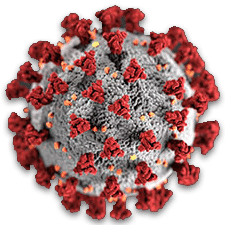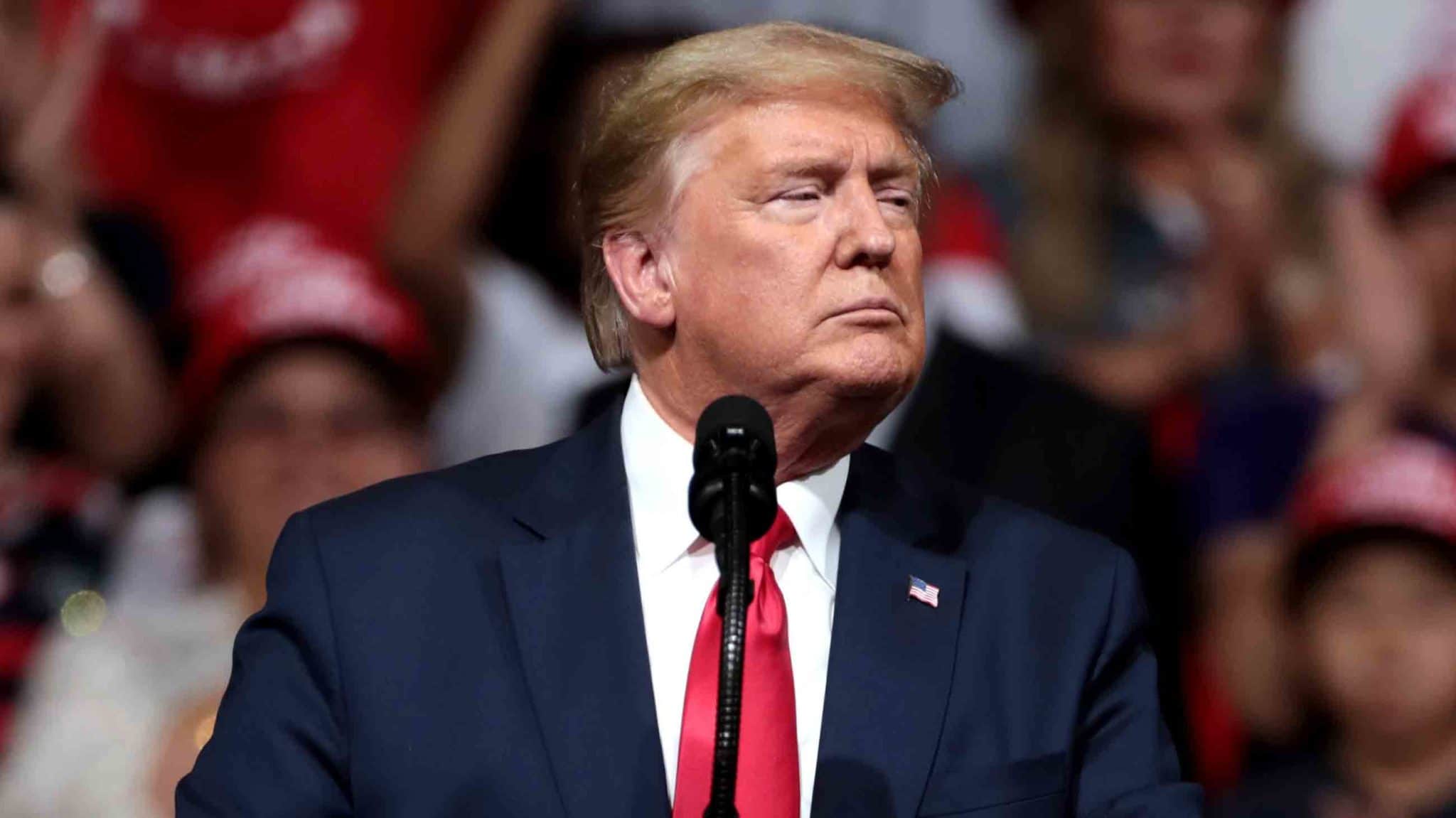This week, President Donald J. Trump unveiled guidelines for reopening the economy amid the coronavirus pandemic.
The plan — which the president relayed to state governors in a video call on Thursday — sets out a gradual approach that would see states and regions move through three phases as they meet certain benchmarks. Before entering phase one, states would need to see a decrease in confirmed or suspected cases of Covid-19 — the disease caused by the novel coronavirus, SARS-CoV-2 — over a two-week period, be able to treat all patients without crisis care, and have a testing program in place for health care workers, among other criteria. Going into phase one, social distancing would continue and employees would be encouraged to keep working from home if possible. Schools would remain closed but restaurants, movie theaters, and gyms could be allowed to reopen with strict protocols in place.
From there, states and regions that continually meet the original criteria would enter phase two, where schools could reopen and non-essential travel could resume. In phase three, daily life would return to a relevant normal, with additional sanitation and hygiene protocols in place.
The guidelines — which do not set out a schedule and are nonbinding — come at the end of a tumultuous week for the U.S. On Monday, governors in the Northeast and on the West Coast announced that they had begun work on their own plans to reopen the economy. President Trump reacted during a press briefing by incorrectly stating that he had “total authority” over such decisions. (On Thursday, a third group of governors formed a multistate coalition in the Midwest.)
In his press briefing, which media outlets have described as “jaw-dropping” and “off-the-rails,” the president played a campaign-style video and pushed back against criticism over his response to the pandemic, stating that “the problem is the press doesn’t cover it the way it should be.” While public health officials warned Trump of the impending threat back in January, the White House did not implement social distancing guidance until mid-March.
Thus far, the country has recorded more than 670,000 cases of Covid-19, including more than 33,000 deaths. And public health experts caution any official numbers are likely underestimates, meaning the pandemic’s true toll could be much higher.
In another attempt to shift blame on Tuesday, the president lambasted the World Health Organization for readily accepting information coming from China, where the virus first originated. (Tweets from early January show Trump also lauded the Chinese government’s efforts to contain the outbreak.) He has pledged to halt U.S. funding to the global health agency pending an investigation into its handling of the pandemic. A leaked State Department memo warns that such a funding cut would put lives at risk.
In this week’s Abstracts, as in previous weeks, we continue to offer a roundup of coronavirus themes that defined this week’s news, and that are likely to stay relevant in the days ahead.
 |
Got questions or thoughts to share on Covid-19? |
• According to a new report from the Associated Press, Chinese officials knew the novel coronavirus was spreading six days before they warned the public. By that time, 3,000 people had already been infected.
Even back in February, public health officials were warning that China’s efforts to block information about a new coronavirus infection, which had been spreading from the city of Wuhan, had enabled the virus to dramatically spread further. This week, an investigation by the Associated Press showed that for six critical days in January, the country’s leaders deliberately withheld news about the infection, enabling millions of people to travel for Lunar New Year while fueling the explosive growth of Covid-19 illnesses. The impact of this failure, public health officials say, helped set the stage for the current global pandemic, which has sickened more than 2 million people and killed more than 147,000. It’s also fostered increasing anger regarding China’s role in the outbreak. In announcing this week that he would suspend U.S. financial support of the World Health Organization, President Trump specifically blamed the WHO for failing to call China to account. But other countries, from the U.K. to Taiwan have also been pointedly critical. And China’s continued efforts to control information about early days of the coronavirus have also helped drive the spread of countless conspiracy theories about the origin of the virus, SARS-CoV-2, itself. Experts are divided on how best to respond to these issues, but they worry that China is countering hostility with hostility, noting that reports of Chinese anti-foreigner actions are rapidly increasing, such as a restaurant in Northern China that put up a banner celebrating the spread of Covid-19 in the United States.
• Demand for grocery delivery services has skyrocketed in recent months, leading customers to face long waits and companies to increase hiring and implement new restrictions.
Grocery stores and online retailers introduced policies this week in a bid to balance the pandemic’s dual pressures — the desire meet the surging demand for foodstuffs and supplies from those isolating in their homes, and the responsibility to keep their workforce safe as they leave theirs to do their jobs. Supermarkets have stopped accepting reusable bags, changed return and exchange policies, mandated the wearing of face masks, and installed barriers at cash registers. Some companies are hiring more employees to meet the demand, including Amazon, which announced this week plans to hire an additional 75,000 workers in the U.S. The retail giant also put a hold this week on new customers for its online delivery services through Amazon Fresh and Whole Foods, and announced plans to convert some Whole Foods locations into fulfillment centers for online orders only. In an attempt to get shoppers to scale back their purchasing, the company has even gone so far as to cancel promotions and discounts. While Amazon has announced changes to policies for worker pay and safety in response to walkouts and strikes, workers still say the company hasn’t done enough to protect them during the pandemic. Staff at other retail and grocery chains remain similarly dissatisfied with their employers’ protective measures — or lack thereof.
• While officials have touted the development of antibody tests as a step toward being able to resume some normal activities, experts warn ensuring their accuracy could take as long as developing a vaccine.
One of the keys to easing social distancing restrictions may be widespread antibody testing, designed to identify people who have previously been infected with the virus and may therefore be immune to it. Coronavirus task force member Anthony Fauci has floated the idea of issuing “immunity certificates” to people who test positive for coronavirus antibodies, as have leaders in some European countries. But health experts are urging caution, in part, as BuzzFeed reported this week, because the state of antibody testing in the U.S. remains largely in disarray: More than 95 coronavirus antibody tests are currently available on the market, but most have yet to be independently validated, and as of Wednesday only three had been authorized by the FDA. Experts are particularly concerned about the tests’ potential to deliver false positives — results that falsely indicate previous exposure to Covid-19 and might encourage those still vulnerable to the disease to return to public spaces prematurely. And researchers aren’t yet certain whether people who recover from Covid-19 retain immunity to it, and for how long. Said Carlos del Rio of the Emory School of Medicine to Politico: “Just because you have antibodies doesn’t mean you have immunity.”
• More than 22 million people in the U.S. filed unemployment claims over the past four weeks, bringing the national employment rate to 13.5 percent.
The U.S. economy marked another gloomy milestone this week, as the Department of Labor reported Thursday that an additional 5.2 million Americans filed unemployment insurance claims, bringing the four-week total to 22 million. The staggering number roughly cancels out all of the country’s job growth since the economy began recovering from the Great Recession nearly a decade ago, according to The New York Times. Layoffs, pay cuts, and furloughs continued this week in nearly every sector — from air travel to news media to technology. Even hospitals struggling to care for the flood of new Covid-19 patients are slashing pay and firing staff, blaming shrinking budgets on postponed elective procedures. The true number of jobless Americans is likely even higher than the official count, as many people continue to have difficulties filling claims on their state’s antiquated and unreliable websites. And millions of those who have succeeded in filing are still reportedly waiting for their benefits to begin paying out. While the mounting economy pain has put pressure on government officials to ease social distancing, many health experts caution that a rush to reopen the economy before a comprehensive testing and tracing system is instituted would almost certainly result in a second wave of Covid-19 cases.
• According to a recent analysis, rural areas may be particularly vulnerable to the ill effects of coronavirus as they tend to have older populations, more frequent health issues, and lack the health care infrastructure to handle an onslaught of critical cases.
In a collaboration with the nonprofit Center on Rural Innovation and Applied XL, a machine intelligence company, the health and medicine news site STAT this week unveiled a tool to assess Covid-19 preparedness on a country level. The data dashboard assigns a preparedness score to each county based on different variables including hospital capacity, human resources, age demographics, and socioeconomic status. Many smaller rural counties within the U.S. received ranks as low as 1 out of 100 based on these factors. A major area of concern is the large number of rural hospitals that have closed in recent years. (Remaining hospitals are both short staffed and lacking in adequate supplies to handle a pandemic.) Experts have cautioned that while population density may drive transmission, the virus is still plenty capable of spreading through rural communities. “It might have a harder time traveling to rural areas, but once it gets there, it will affect rural areas in a similar fashion to more densely populated areas,” University of Iowa epidemiologist Jorge Salinas told STAT.
There’s plenty of excellent reporting and analysis available.
Below is a list of some of the journalists, experts, and publications that Undark is following.
- Helen Branswell (@HelenBranswell), senior writer, infectious diseases, STAT
- Peter Sandman and Jody Lanard, risk communication experts
- Kai Kupferschmidt (@kakape), molecular biologist and science journalist, Science Magazine
- Trevor Bedford (@trvrb), computational biologist, Fred Hutchinson Cancer Research Center, Seattle
- Lawrence Gostin (@lawrencegostin), professor of global health law, Georgetown University
- Muge Cevik (@mugecevik), infectious disease researcher, University of St. Andrews
- Julia Belluz (@juliaoftoronto), health correspondent, Vox
- Ed Yong (@edyong209), science writer, The Atlantic
- Kaiser Health News, full coronavirus coverage
- ProPublica, full coronavirus coverage
- U.S. Centers for Disease Control and Prevention, latest coronavirus news
- World Health Organization, rolling coronavirus updates
- Global Covid-19 Case Tracker, Johns Hopkins Center for Systems Science and Engineering
- The Covid-19 Tracking Project
- The Syllabus, Coronavirus Reading Lists
- Virus Academics Twitter list
Undark will continue to provide weekly roundups of Covid-19 news each Friday for as long as the pandemic continues. You can find our own Covid-19 coverage here.
Deborah Blum, Lucas Haugen, Francesca Schembri, and Ashley Smart contributed to this roundup.










